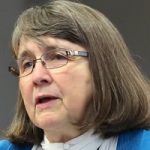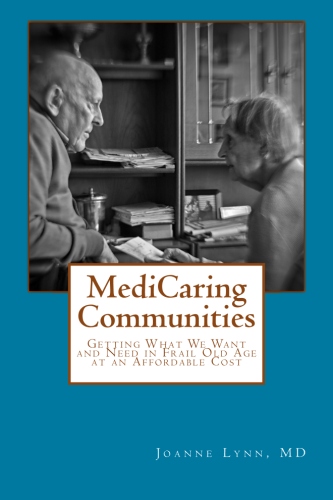This is the draft as of August 7, 2020. Please add your comments at the bottom and we’ll update!
Eldercare has long been the stepchild of society’s pursuit of well-being – shunned by medical care and starved by social arrangements. A century ago, this did not matter much – people did not live so long, families were large and mostly on farms where taking in a relative was not so hard, and medical care did not have much to offer. The situation has changed, but the social arrangements have not kept up. COVID-19 has illuminated a number of the shortcomings. There will be a few short windows of opportunity to change things, but the advocates need to be ready with workable proposals. This blog aims to accumulate proposals that seem worthwhile for use by whoever wants to use them. Please add your comments and suggestions in the comments at the end!
Action Steps
- Everywhere that we see an opportunity, encourage broad public and leadership awareness of the high likelihood that each American will live with serious disability for a substantial period and that we are exceedingly poorly prepared to enable late life to be comfortable and meaningful. Write letters to editors, op-eds, and blogs. Call in to radio shows. Ask questions of candidates.
- Push to revise how we finance supportive care for elders. Allow pre-tax payment for long-term care insurance. Call for a new social insurance to cover “catastrophic” levels of costs from needing long periods of long-term care. Call for Medicare’s capitated plans (Medicare Advantage) to cover an understandable standard set of supportive services for defined situations.
- Generate data that will enable communities to understand how well their community is performing with regard to eldercare and that can monitor efforts to improve. We need visible data about the availability of home-delivered food, adapted housing and transportation, direct service workers, medical care at home, and the quality and reliability of personal care.
- Enable some local authority to monitor and manage eldercare on behalf of the community – could be the responsibility of the Area Agency on Aging, the public health office, a coalition of concerned entities, county government, or another approach – – but somehow, we need to create a locus of responsibility for improving performance.
- Strategize to reduce reliance on hospitals and nursing homes. They are essential in some circumstances, but many more people could be treated at home or in an outpatient setting, and many more people could go straight home from a hospital stay, IF the community had readily available and fully adequate supports for disabled people living in the community. So – advocate for more adequate funding for the Older Americans Act, which supports meals, care coordination, Area Agencies on Aging, etc. Advocate for more outreach to prevent abuse and neglect. Learn what is not available in your own community and push for that.
- Support family caregiving. Employers could seek to be flexible in leave, adjusted hours, and working from home. Respite care could be made available. Family caregivers could be paid in some circumstances and could get social security credits and Obamacare health insurance coverage.
- Improve the working conditions for direct care workers. Require a living wage, whether working in facilities or homes. Require conventional workers benefits. Ensure that they have the personal protective equipment and COVID-19 testing (or whatever else arises) that they need. Build career ladders with certifications and opportunities to advance.
- Push our organizations to be strong supports – AARP, Alzheimers Association, caregiver groups, professional organizations, provider organizations, political organizations, etc.
- Send in suggested questions for televised debates of candidates. Tweet to reporters.
- Express outrage over the forced isolation (solitary confinement!) of nursing home residents without even asking them about their tolerance for the risks, or enabling survivors of the infection to be more liberated from restrictions.
- Highlight the need for all elders to have comprehensive care planning, including advance care planning for medical care. Nursing homes and assisted living centers should have nearly 100% compliance and failing to undertake this work should be a cause for penalties.
- Study and respond to the evident disproportionate impact of COVID-19 on nursing home staff and residents who are African-American, Latinx, or immigrants.
- Encourage very limited liability protections for alleged shortcomings arising from COVID-19. The country should avoid a plague of lawsuits, but whatever protections are put in place should be limited in time and scope.
I’ve become quite fond of the hopefulness of this quotation – and a devotee of having good ideas “lying around.” So – let’s get behind them and push them to be politically inevitable!
“Only a crisis – actual or perceived – produces real change. When that crisis occurs, the actions that are taken depend on the ideas that are lying around. That, I believe, is our basic function: to develop alternatives to existing policies, to keep them alive and available until the politically impossible becomes the politically inevitable.” Milton Friedman
This is the draft as of August 7, 2020. Please add your comments at the bottom and we’ll update!


